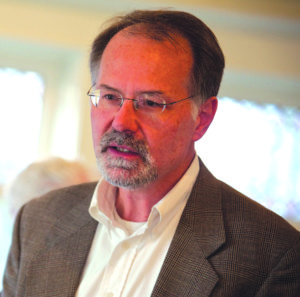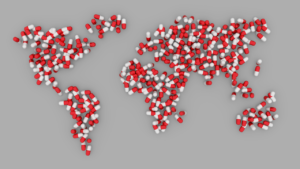J-Term: Prozac Culture
 This next installment in the J-Term series has been written by Joseph E. Davis, Associate Professor in the Institute for Advanced Studies in Culture. See the other J-Term blogs here.
This next installment in the J-Term series has been written by Joseph E. Davis, Associate Professor in the Institute for Advanced Studies in Culture. See the other J-Term blogs here.
“One out of every five U.S. adults uses at least one drug for a psychiatric problem; 11 percent of all adults took an antidepressant in 2010; nearly 4 percent of our children are on a stimulant and 4 percent of our teenagers are taking an antidepressant; 25 percent of nursing home residents are given antipsychotics.”
Allen Frances, Saving Normal
The J-Term is a unique opportunity. Meeting for four hours per day permits extended discussion, debates, oral presentations, documentary viewing, and other forms of engagement that are far more difficult in the shorter class periods of the regular semester. And during J-Term, students and faculty are studying only one thing, intensively.
The one thing we explored in the course Prozac Culture is the widespread and growing use of prescription psychotropic medications—for which Prozac remains an iconic symbol—by both adults and children. We asked how this expansion, well beyond the limits of serious mental illness, came about and with what consequences, both for health and for our conduct of life.
Drawing on a rich literature of historical investigations, sociological studies, and philosophical critiques, we surveyed a number of social factors promoting increased medication use for common forms of distress. These factors include drug development since the 1950s, both new compounds and longer acting formulations. They include trends in psychiatry, particularly the definition and expansion of disorder categories in the diagnostic manual and the shift toward biological theories of psychopathology. They include pharmaceutical industry promotion efforts—direct to consumer advertising, sponsored medical research, sponsored patient advocacy groups and celebrity spokespersons, and the use of physicians as “thought leaders” to give talks and otherwise engage in peer-to-peer marketing. They include trends in medical practice, government regulatory actions, the extensive but generally one-sided reporting of success stories in the media, and more.
All these frequently referenced factors tell part of the story, but they don’t help us understand the remarkable receptivity of ordinary Americans (including college students) to these drugs and to the medicalization of ordinary life. For this, we have to ask not just what actions professionals have taken, but what people need and desire: what predicaments they find themselves in, what diagnoses and talk of the brain helps them to explain, what medications help them to be or become.
These are not individual matters or medical or psychiatric questions. I quoted above from a book by Allen Frances, former chair of psychiatry at Duke and of the task force which writes psychiatry’s diagnostic manual. “Normal,” he writes, in light of the high rates of medication use, “badly needs saving.” But “normal” and other issues of human difference are not matters that psychiatry simply decides upon, or that it can restore to some universal understanding. Questions of being are social and cultural, and while there is certainly a feedback loop, psychiatry does not so much create change at this level as reflect it.
Therefore, we considered how social and technological transformations and the enlarged space of “choice” within liberal culture are generating new forms of distress and disconnection in people’s lives; new ideals and obligations of self and social performance; and, ultimately, new definitions of what it means to be human. These, in turn, alerted us to what is at stake in Prozac culture, practically and ethically, regarding how we order important aspects of our life.
The intensive two weeks of J-Term provided just the right opportunity to collectively wrestle with these big questions.
- A Revolution in the Air: The Wright Brothers Take to the Sky on December 17, 1903
- Musings on National Violin Day
- Making the Promise Real: How a UN Tax Convention Can Fulfill the UNDHR’s Vision
- UVA Club of Atlanta: Virtual Pilates Class
- UVA Club of Vietnam: J-Term Farewell Social
- UVA Club of Charlottesville: Hoos Reading Hoos January Book Club
